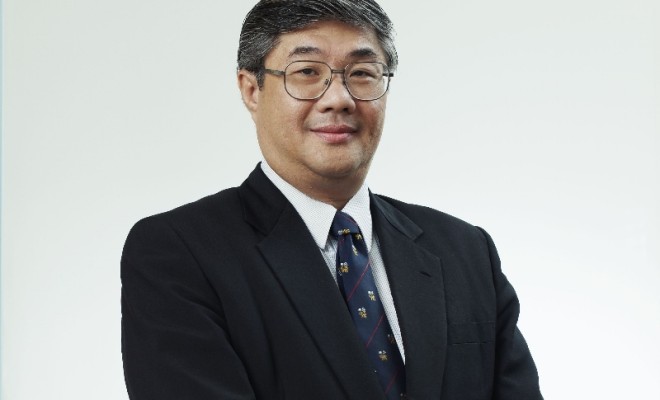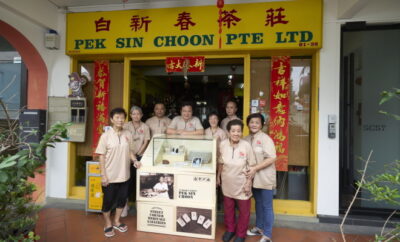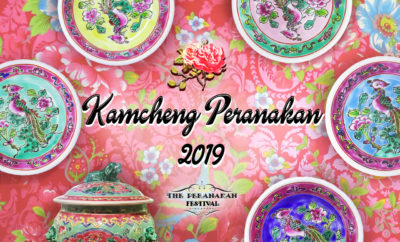
Insights + interviews
In Conversation with Professor Walter Woon, Patron, Gunung Sayang Association
This October, the Gunung Sayang Association will be hosting its annual Wayang Peranakan in October. The association is an organisation promoting Peranakan activities through music, drama and dance.
This event dates back to 1986 and serves to bring the Peranakan community together to celebrate and embrace their heritage. They will be performing a play titled Udang Sebalek Batu (The Hidden Truth) as the highlight for this year’s Wayang Peranakan and to mark their 105th anniversary.
We speak with Professor Walter Woon about Peranakan heritage and the challenges in keeping the culture alive in Singapore.
The Active Age (TAA): Can you share with us more about Gunung Sayang Association.
Professor Walter Woon (WW): Established in 1910, Gunong Sayang Association showcases the best of Peranakans, through art performances, social and educational events.
Through such activities, the association seeks to present and educate Singaporeans, particularly the younger generation, on the colourful tapestry of Peranakan culture. In its early years, Gunong Sayang Association promoted social intercourse and the singing of dondang sayang (singing of pantuns or four-line verses set to music) among its Peranakan members.
Over the years, it also explored different Peranakan artistic activities. In 1986, the association staged the Wayang Peranakan play Buang Keroh Pungot Jernih. The play was an unparalleled success, helping Peranakans better appreciate their heritage through the reinvention of Wayang Peranakan on a theatre stage.
Celebrating its 105th anniversary this year, Gunong Sayang Association continues to discover new opportunities to inspire a greater appreciation of the Peranakan way of life.
TAA: How did you get involved and later on, as a patron?
WW: I was approached by GSA and was more than honoured to accept their invitation and join this amazing company as a patron. I believe it was because of my Baba background as well as my experience in public service (NMP, ambassador, Attorney-General) and my novels (The Advocate’s Devil, The Devil to Pay, The Devil and the Deep Blue Sea, The Devil’s Circle), all of which have a Baba protagonist.
TAA: What are some of the cultural values you are hoping to share with Peranakans and Singaporeans in general?
WW: The Babas are the only truly indigenous culture in Singapore, being a unique mix of Chinese and Malay influences overlaid with English. They form a bridge between the two major communities, since the Babas speak a Malay-Hokkien creole but keep to Chinese customs.
The Baba culture values harmony between people and avoids confrontation as much as possible. The Babas also place great store on being refined (‘halus’) in manners and treating elders with the proper respect.
TAA: What are the challenges trying to keep the culture alive, and relevant in Singapore?
WW: It is impossible to stop a culture from evolving. When women were educated and entered the workforce, it was inevitable that Baba culture would change.
So much of what we consider to be ‘Peranakan’ (an Indonesian word that was applied to the Baba community in the ‘seventies) revolves around the household – the cuisine, the crafts, the religious observances and customs surrounding birth, marriage and death.
We should not try to preserve the (Peranakan) culture frozen in time.
In modern Singapore, it is essential firstly that we should know where we came from in order to appreciate what we are today. Secondly, the Babas from a bridge between the Chinese and Malays, one that is essential for the racial harmony that we take so much for granted.
TAA: Language is a symbol and a marker of culture. How do you think this has evolved for the Peranakan culture over the past decades?
WW: The Speak Mandarin campaign was the death-blow for the Baba language. Nonetheless, as we recognise the need to interact with our immediate neighbours to the north and south, it will be essential to promote the understanding of Malay.
Moreover, there has been an influx of Indonesian Chinese over the years, who also speak Bahasa Indonesia. Baba Malay is actually closer to Bahasa Indonesia in pronunciation and vocabulary than it is to the Bahasa Melayu that is taught in schools. The Baba community in Singapore may play a useful part in interaction with our Indonesian neighbours, who tend to be suspicious of the Chinese.
TAA: What are some examples of baba culture in Singapore?
WW: The most recognisable aspect of Baba culture is the food. There has been a proliferation of Peranakan restaurants over the years, but these often serve Indonesian food. Some of these restaurants have gone halal, which destroys the essence of Nyonya cuisine, much of which is pork-based.
Beyond the food, there is an interest in the porcelain, with modern reproductions being sold in various shops.
One also sees occasionally ladies dressed in colourful kebaya, in bright shades would not be seen in Indonesia or Malaysia among the natives.
Finally, there is also some interest in Baba culture in books, TV and films, though local Chinese dramas like The Little Nyonya lack authenticity. This may change through the efforts of groups like Gunung Sayang Association, who provide a much more authentic experience of the language, music and dance.









